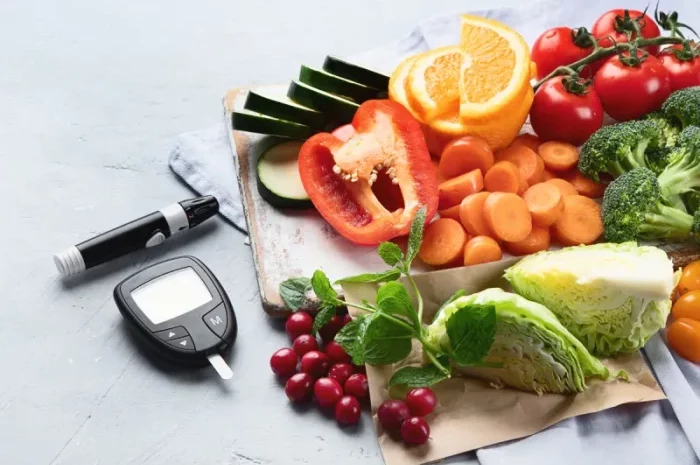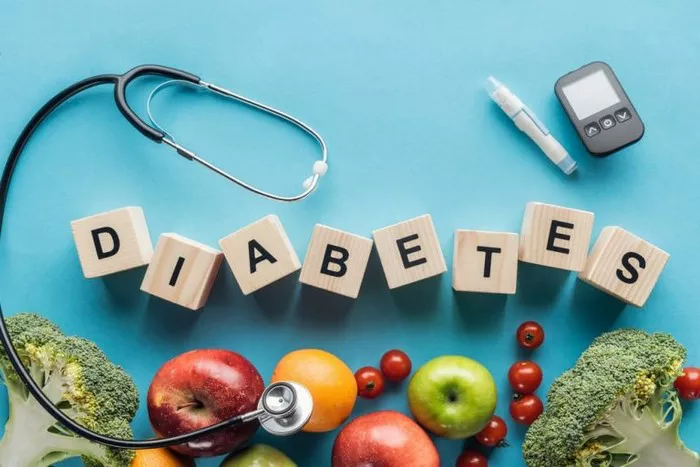Managing gout and diabetes simultaneously can be challenging, but with careful attention to diet, it is possible to control both conditions and improve overall health. Gout, a type of arthritis caused by elevated levels of uric acid in the blood, and diabetes, a metabolic disorder characterized by high blood sugar, both require specialized dietary management. Foods that benefit individuals with gout often overlap with those beneficial for managing diabetes, offering a unique opportunity to adopt a balanced, anti-inflammatory, and blood sugar-stabilizing diet.
Understanding Gout and Diabetes
Before diving into the foods that are helpful for both conditions, it’s important to briefly understand the mechanisms behind gout and diabetes. Gout occurs when uric acid, a byproduct of purine metabolism, builds up in the body, forming crystals that deposit in the joints, especially the big toe. This causes intense inflammation and pain. Factors like excessive alcohol consumption, obesity, dehydration, and a diet high in purine-rich foods (such as red meat and seafood) contribute to gout flare-ups.
Diabetes, on the other hand, is primarily classified into two types: Type 1 diabetes, which results from an autoimmune response that destroys insulin-producing cells, and Type 2 diabetes, where the body becomes resistant to insulin or does not produce enough. Both types of diabetes are marked by high blood sugar levels, which can lead to various long-term complications, including cardiovascular disease, kidney damage, and nerve issues. Diet plays a critical role in controlling blood sugar levels, and individuals with diabetes must be careful with foods that can cause rapid spikes in glucose.
Since both gout and diabetes are influenced by diet, making mindful choices is essential for individuals managing these conditions.
The Role of Food in Managing Gout and Diabetes
A proper diet can reduce inflammation, regulate blood sugar, and help prevent the worsening of both conditions. While the goal is not to provide a single list of foods that will cure both gout and diabetes, it is possible to focus on the types of food that are both anti-inflammatory and glycemic-friendly. Below are several categories of foods that work well for individuals managing both gout and diabetes:
1. Anti-Inflammatory Foods
Since gout is primarily an inflammatory condition, consuming foods that reduce inflammation is essential. The following anti-inflammatory foods are beneficial:
Fruits and Vegetables: These are the cornerstone of an anti-inflammatory diet. Berries (blueberries, strawberries, raspberries), cherries, and citrus fruits are particularly beneficial for gout sufferers due to their antioxidant properties. These fruits have been shown to reduce uric acid levels and decrease inflammation. Non-starchy vegetables such as spinach, kale, broccoli, and bell peppers are excellent choices for both diabetes and gout. They are high in fiber, low in sugar, and packed with vitamins and minerals.
Leafy Greens: Dark leafy greens like spinach, kale, and collard greens are excellent choices because they are low in calories and carbohydrates, making them suitable for blood sugar management. These vegetables also contain compounds that help reduce inflammation.
Cherries: Specifically, cherries have been shown to have a significant impact on lowering uric acid levels. A study found that consuming cherries reduced the frequency of gout attacks, and they are also low on the glycemic index, making them a good choice for diabetics.
2. Whole Grains
Whole grains, such as oats, quinoa, and barley, are rich in fiber and have a lower glycemic index compared to refined grains. Foods with a low glycemic index help maintain stable blood sugar levels, which is critical for diabetes management. Additionally, whole grains help improve digestion and reduce the risk of heart disease, which is a concern for both diabetics and gout sufferers.
Oats: Oats are an excellent source of soluble fiber, particularly beta-glucan, which helps lower cholesterol levels and improve insulin sensitivity. They are also naturally low in purines, making them safe for individuals with gout.
Quinoa: This gluten-free grain is a complete protein and is also low in purines, making it an excellent choice for gout sufferers who need a plant-based protein source. Quinoa is also a great source of fiber and magnesium, both of which are beneficial for diabetes management.
3. Healthy Fats
Fatty acids, especially omega-3 fatty acids, play a crucial role in reducing inflammation and supporting heart health. Both diabetes and gout increase the risk of cardiovascular disease, so incorporating heart-healthy fats into the diet is essential.
Olive Oil: Olive oil is rich in monounsaturated fats and antioxidants, which help reduce inflammation. Studies have shown that regular consumption of olive oil can reduce markers of inflammation and improve blood sugar control.
Fatty Fish: Fish such as salmon, mackerel, sardines, and trout are high in omega-3 fatty acids. Omega-3s help reduce inflammation and may lower uric acid levels. These fish also provide protein and healthy fats, which are important for people with diabetes who need to manage blood sugar levels.
Nuts and Seeds: Almonds, walnuts, chia seeds, and flaxseeds are excellent sources of healthy fats and fiber. They also provide a good balance of protein and healthy fats that help control blood sugar levels. Walnuts, in particular, contain omega-3 fatty acids, which can be beneficial for both gout and diabetes.
4. Lean Protein Sources
For individuals with gout, it is important to limit the intake of purine-rich proteins, which can elevate uric acid levels. However, protein is still an essential part of the diet, particularly for maintaining muscle mass and promoting satiety. Choosing lean protein sources that are lower in purines is crucial.
Legumes and Beans: Beans, lentils, and chickpeas are plant-based proteins that are low in purines and can be a great alternative to meat. These foods are also rich in fiber, which helps stabilize blood sugar levels.
Chicken and Turkey: While red meat (such as beef and lamb) should be limited due to its high purine content, poultry like chicken and turkey can be consumed in moderation. These lean meats are lower in purines than red meat and provide a good source of protein for diabetics.
Tofu and Tempeh: For those following a plant-based diet, tofu and tempeh are excellent sources of protein. They are low in purines and can be included in meals to provide satiety and help control blood sugar levels.
5. Dairy Products
Dairy products can be beneficial for both diabetes and gout when chosen carefully. Low-fat or fat-free dairy options are recommended because they provide calcium and protein without the added fat content that could contribute to weight gain or increased uric acid levels.
Low-fat Yogurt: Yogurt is a good source of protein and probiotics, which support gut health and can help control blood sugar. Look for plain, unsweetened yogurt to avoid added sugars that can spike blood glucose levels.
Cheese: While full-fat cheese should be limited due to its saturated fat content, low-fat cheese options can be a good source of calcium and protein, essential for bone health and blood sugar management.
6. Hydration and Electrolytes
Proper hydration is vital for both managing gout and controlling diabetes. Dehydration can cause an increase in uric acid concentration, which may lead to gout flare-ups. Moreover, drinking plenty of fluids helps flush out excess uric acid from the body.
Water: Water is the best option for staying hydrated. Drinking plenty of water throughout the day helps keep uric acid levels in check and supports healthy kidney function.
Electrolyte-Rich Drinks: For individuals with diabetes, it’s important to avoid sugary drinks. Instead, opt for drinks that are rich in electrolytes, such as coconut water. Coconut water contains potassium, which helps balance sodium levels and supports overall health.
7. Herbs and Spices
Incorporating anti-inflammatory herbs and spices into meals can help alleviate symptoms of both gout and diabetes. These natural ingredients can support the body’s ability to reduce inflammation and regulate blood sugar.
Turmeric: The active compound in turmeric, curcumin, has potent anti-inflammatory properties. Adding turmeric to soups, stews, or smoothies can reduce inflammation associated with gout and improve insulin sensitivity in people with diabetes.
Ginger: Like turmeric, ginger is known for its anti-inflammatory effects. It also has properties that may help lower blood sugar levels, making it beneficial for diabetics.
Cinnamon: Cinnamon is a flavorful spice that has been shown to help regulate blood sugar levels. It can be added to various dishes or beverages for a hint of sweetness without spiking blood sugar.
Foods to Avoid
While there are many foods that are beneficial for managing both gout and diabetes, it’s also important to avoid certain foods that can exacerbate both conditions:
Red Meat and Organ Meats: These foods are high in purines, which can increase uric acid levels and trigger gout flare-ups.
Refined Carbohydrates and Sugary Foods: Processed foods, white bread, and sugary snacks can cause rapid spikes in blood sugar levels and contribute to inflammation.
Alcohol: Particularly beer and spirits, alcohol can raise uric acid levels and interfere with blood sugar control.
Conclusion
When managing both gout and diabetes, it is essential to focus on a balanced, anti-inflammatory, and blood sugar-friendly diet. By incorporating whole foods such as fruits, vegetables, lean proteins, whole grains, healthy fats, and dairy, individuals can help control both their uric acid levels and blood sugar. Additionally, choosing foods that reduce inflammation and support overall health can make a significant difference in preventing flare-ups and maintaining long-term health. As always, individuals with gout and diabetes should consult with a healthcare provider or nutritionist to tailor their diet to their specific needs and medical history.
Related topics:
What Is a Strict Diabetic Diet?



























